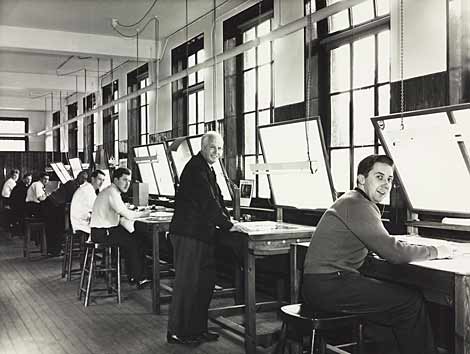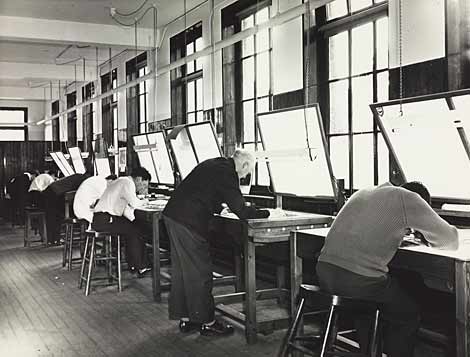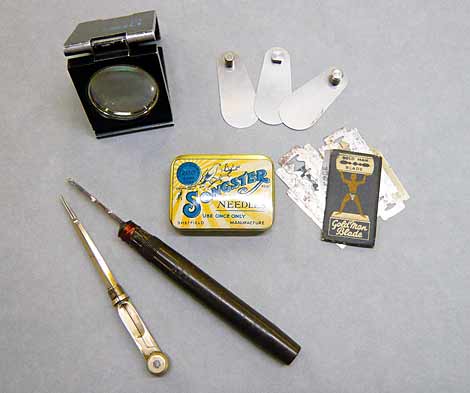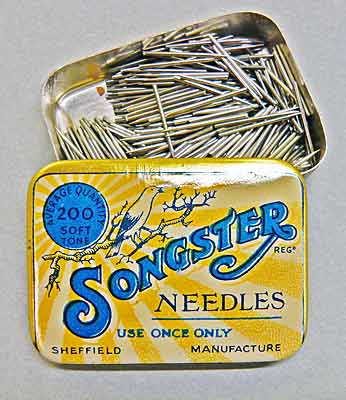Litho Artists' Room
Bartholomew's lithographic artists, also known as 'litho writers', were responsible for amending the place names and lines on maps.
They had to be able to make complex but tiny amendments by hand, and the five-year apprenticeship reflected the skilled nature of this work.
Photo of the Litho Artists' Room
The Lithographic Artists' Room at Duncan Street in the 1960s. It was a room dominated by windows, letting in the light required for this intricate work.
However, light diffusers helped to limit the glare, which was necessary by this time, as the team worked on glass plates and film.
Litho artists at work
Bartholomew litho artists at work in the 1960s. Theirs was a highly skilled job, taking years to master. (See also previous image.)
Litho tools
This is a small selection of tools that belonged to Bartholomew lithographic artist Alex Coventry.
Because the work was so intricate, magnifying glasses — like the one at the top left — were essential. Some of the more unusual tools include razor blades — used to delicately remove ink from glass plates — and Songster gramophone needles (see next image). These were used as points in handmade tools known as 'scribing tools'.
Songster needles
Songster gramophone needles were used by Bartholomew's litho artists as points in 'scribing tools' which they made by hand. (See also previous image.)
Park Road litho room
The work of Bartholomew's lithographic artists was very different at Park Road, Bartholomew's premises prior to Duncan Street. The litho artists worked directly on the lithographic stones, in a relatively dark office.
With only a thin partition separating them from the machine floor, it would have been noisy too.
Typeface sample book
Bartholomew's lithographic artists, engravers and draughtsmen were all able to reproduce a wide variety of typefaces, by hand.
Practising and perfecting these was the basis of apprenticeships in those departments. Customers could consult sample books like this and choose fonts to customise their map commissions.
Litho stone record book
This is an example from Bartholomew's lithographic stone record books. It reveals some of the work undertaken during the First World War. At this time, the lithographic artists would have worked directly on the lithographic stones.
The records reveal who Bartholomew's customers were, and the work undertaken by the lithographic artists.
Staff recording
Alex Elder describes the work of Bartholomew's lithographic artists.
Staff recording
Alex Elder describes a technique called 'scribing', used by lithographic artists to amend maps on glass plates.
















